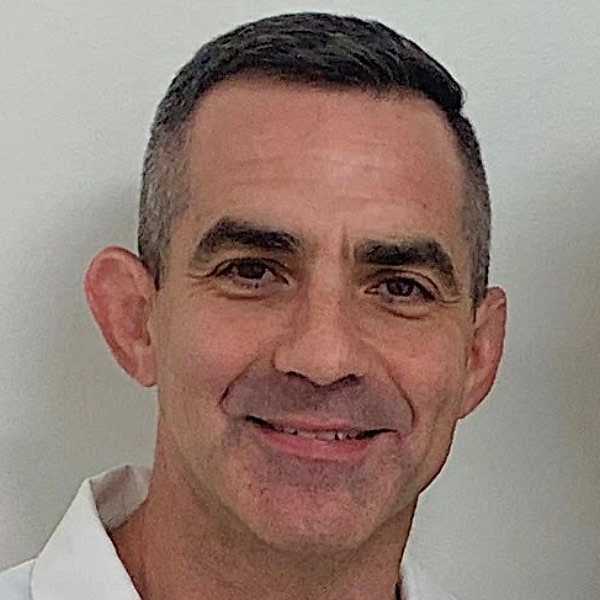Five-Month Patient Results Following Ankle Ligament Reconstruction
Transcription
CHAPTER 1
Hi. My name is Eric Bluman. This is my patient Kyra Benavent, and she's back for a five-month visit after a surgery that we performed for stabilizing her ankle. Kyra tell - talk to me about how - how you've been - how you’ve felt since the surgery. Since the surgery, the first couple of months were definitely a little difficult, but it's gotten so much better in the past eight weeks. I've gained pretty much full range of motion. I can do whatever I want so much better than before the surgery. So you’re glad that we did the surgery? Yes. And it - it helped you? Yeah. Okay. Do you have any residual problem? There’s no residual problems right now. There's a little bit of stiffness, but you said that was expected, so. So yeah, that - that - that can happen after these type of surgeries, and sometimes, it's a little bit of a trade-off. You know, you've got instability, and in order to get rid of the instability, we actually give you a little bit of stiffness. In terms of the range of motion of the ankle, how close is it to your - your well or non-operated side? I'd say this one being a 100%, this is probably at 85 right now. 85. Do you think it's continuing to get better? Yeah, definitely - everyday. Okay. Do you have anything that you can't do that you'd like to do? No. No. Any plans for the future with this? What are you - what are you planning on - on doing activity wise with your ankle? Well, I would like to continue to play softball because I had to stop doing that for a while, so I'm hoping this summer I can train and get back to where I was. And what - what level softball do you play? Well I am a college athlete, so... So you’re gonna be playing at the college level, NCAA. Yeah. hopefully the D1 level. Yeah. Good. Alright, any other comments or insight or things that surprised you about the process or the surgery? Things that were unexpected or - or - or either welcome or not unwelcome surprises? I don’t think so. It was pretty straightforward. Recovery period was long as expected, but it's a very good result - and I'm very happy. Okay, great. Let me - let me tell them a little bit about what we did just to sort of recap, and then we'll go through a physical exam, okay? Okay. Kyra’s complaint was that she had instability and pain in her ankle, and it was present not only in the ankle joint, but she also had problems with the peroneal tendons. And we diagnosed that with a combination of clinical examination, her history, of course, and - and some imaging studies. We use the surgery not only for treatment but also to shore up our diagnosis. And we started out doing - addressing her peroneals - her peroneal tendons, and we did a peroneal tendoscopy, which is a relatively new type of surgery that is minimally invasive and allows us to go in and not only confirm diagnoses but also treat mild-to-moderate problems of the - of the peroneal tendons. And we did that using four different small incisions to - to place the cameras and the instruments. Following that, we did an ankle arthroscopy, and that was also diagnostic as well as for treatment. We cleared out a lot of internal derangements in her ankle, and we also confirm that the medial ligaments were - were damaged. And indeed, they - we saw that - we saw proof that that was happening from the arthroscopy. At that point, we converted from a minimally-invasive, or arthro - arthroscopic method to an open method and did both a medial ligament reconstruction and a lateral ankle reconstruction. And now we're going actually take a look at - at Kyra’s ankle and - and show you what was done.
CHAPTER 2
Here we’re looking at the lateral side of Kyra's ankle, and if you can see, there are some small incisions that are here. And we actually can only see three of them here. Then these are what were used for the peroneal tendoscopy, and we were able to clear out a good length of the pathology and take care of all her problems through these very small incisions. Here is the incision that we used for the lateral ankle ligament repair, which is commonly called the Brostrom-Gould procedure, and this addressed both the anterior talofibular ligament as well as the calcaneofibular ligament and gave her good stability in - in through this area. On the anterior portion of the front of the ankle, there were two portals created - one here and one here - and that allowed us to go in and both diagnose and treat any internal problems of the joint. And again, that helped us confirm some instability over the medial ligamentous complex. And what you can see here is an incision that we used to do the direct open repair there. So I'm gonna just put Kyra’s ankle through a range of motion and some - some physical examination here to - to demonstrate what we've done and to show that her range of motion really has been maintained in a - in a nice fashion. So the first thing we'll do is just do some dorsiflexion and plantarflexion maneuvers. You can see that she's probably got about 10 degrees of dorsiflexion, and I don't know - I'd say 35 or 40 degrees of plantar flexion through the ankle. And that's really good, and what I'm gonna do is compare it to the other side now. We'll do it independently, and then we'll do it in tandem. You can see that it's very very close, and let me have Kyra do it actively. So go ahead and dorsiflex. Bring them up. Great. And down. It’s very close to symmetric. It's very nice. And - and move your feet in and out too, Kyra. So that's - that's really nice. Both ankles are supple. There’s very little stiffness in this operative side. And the other thing that I'm going to do here is a test for stability, and I'm gonna make sure that this is nice and stable. And that's - again, you can see that there's no real laxity to the ankle, and it’s not causing her any pain. Kyra, let me have your stand up. So now we got Kyra standing up, and we're gonna see what kind of strength and motion she's got in her ankle, functionally, when - again, from a standing position. So Kyra go - go ahead and come up on your toes while - okay, and back down. Do that a few times. Good. Alright. Now, are you strong enough to - to come up r - on your right ankle alone? Yeah. Okay, go ahead. Great - yeah, absolutely. Good. Great. So - obviously, so what you're telling us has been sorta proven. You can feel like you have good stability and good strength, and you’re not gonna - you don’t feel like you're gonna tip over when you do that. No, it feels very good. Okay. Great.
CHAPTER 3
Here we have the latest radiographs of Kyra's, and these are from about a month ago now, showing the results from a radiographic perspective. And you can see, this is a anteroposterior view of her ankle in a standing position, and it's important to note - you know, she's got good maintenance of the joints space here. The talus here is well aligned below the tibia, and you can see right here, this is really the only hardware that we placed despite the extensive nature of - of the surgery that we did. This is a suture anchor made out of titanium that's placed into the tibia that we used to anchor the repair of the medial ligament complex. That's really the only abnormality or not natural thing that we see on this - on this x-ray. The mortise view, which is a slightly internally-rotated view, shows us much of the same. There’s no evidence of any arthritis, she's got good joint space preservation, and the alignment of the ankle is good. And - and this is echoed even further with her lateral view. Here you can see the - the anchor right here. You can see it's well above the joint line, and it doesn't even - doesn't encroach on the - on the cartilage or the subchondral bone. So all really good things for Kyra.
CHAPTER 4
The surgical on video that's available is really germane for orthopaedic surgeons who treat any sort of foot and ankle pathology. It's also very important for family medicine docs who have a specialization or concentrate on sports medicine injuries as well as people such as physical medicine and rehabilitation specialists and physical therapists. And this is especially important when you're talking about medial ankle instability. It's something that we're not always keyed into as clinicians. In terms of medial ankle instability, radiographs can appear quite normal as in this patient's. The diagnosis is suggested by the history as well as a phys - physical examination but really isn't cemented until you’re able to do an arthroscopy and - and prove its presence from a - from a surgical perspective. In the arthroscopic images that you can see in - during the operative video, you can clearly see the instability that’s present on the medial side. And this is really in distinction to what we see on the lateral ankle ligament instability where the clinical examination as well as the physical and - and - and on occasion the radiographs can provide you with a proof-positive diagnosis and - and arthroscopic confirmation is usually not necessary. Diagnosing medial ankle instability really does incorporate the surgical confirmation of it, and it's important for physical therapists, physical medicine rehabilitation specialists, and orthopaedic surgeons to realize that it's important to look for these things - and that many cases - these - this diagnosis is suggested in these manners, but really needs full confirmation using arthroscopy.


